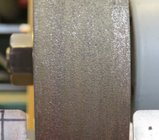Well Odie I usually agree with a lot of what you post but maybe I need to point out the error of your ways.

For one thing there are many new things in the last "100 years" as in Electronic Variable Speed Control, powdered metals which sharpen better with CBN (that is proven fact), bowl gouges as we know them (50 years ago they were made from flat bar stock. Mmmm I know there are many other things new under the sun in the last 100 but I just don't have the time. Oh and one more thing name someone who has never bought something that did not work as they expected from the get go.
Hi Gerald......
We are certainly in disagreement about some things, and it's all in the results that really matter. The best of those old guys were very "individually" analytical about their observations, and that's one real difference between then and now. There is so much input from alternative sources, that it keeps one from forming an opinion that is completely separate from what experiencing some basic knowledge + time in the saddle, and
especially without that "group think" input, can produce.
This is not to say that there aren't a few things that are appropriate and applicable.....just that there are many more inapplicable things, than those that are truly applicable!
I will have to agree with variable speed, but not that it's just more convenient by eliminating the need to change belts on pulleys. Another way to look at it, is that it does allow one to fine tune a spindle speed to the vibration characteristics of a particular mounted piece of wood. Fine tuning the speed may be an important aspect.....but it means nothing, however, if a number of other things are not included in the overall equation...
I will disagree about powdered metals and CBN wheels. That they sharpen better is a "proven fact" is an opinion I don't hold. I sharpen my tool edges very much like fine furniture makers did many years ago. You cannot get a sharper edge on a CBN+ powdered hybrid steels than those furniture makers did with honing methods using fine Arkansas stones to acquire an edge for their planes and carving tools. The difference, is an edge is quicker achieve, but not any better. Aside from that, knowing just when to sharpen is much more important, albeit much more difficult to comprehend when steels don't dull as quick.....and, that is an important point that very few of the "herd" will ever understand. One thing that is better, is an edge created with diamond hones is more convenient, but not better than an edge created with fine Arkansas stones. This distinction is neither here, nor there......mainly because nearly all current new turners never learn to hone like the old guys did......there is a gap there in the traditional learning experience, compared to the modern "enlightened" turner......but, I expect very few will grasp that difference without the knowledge that makes it possible.
When it comes to metal stock used to make turning tools, maybe I should have made the distinction of 75 or 50 years......to the time when M2 steel was first available. Although I did dabble in some hybrid steels at one time, I concluded that the rate of dulling is not the most important feature when comparing steels.....when we take into consideration those triggers that tell us to re-sharpen. I probably re-sharpen 2-3-4 times more often than most other turners, but the difference is my tools are sharper while in use, specifically because of the rate they dull, and the number of times I have to re-sharpen. (When I say "re-sharpen", I'm not speaking of trips back to the grinder, but re-honing.) I re-hone with 600gt diamond hones up to about 5, or more times, before I return to the grinder. The purpose of a grinder is to remove metal, that's all. The edge is acquired through honing.
You are correct, Gerald. I can't think of anyone who hasn't bought some "latest and greatest" tool, when it ultimately became a big disappointment.....including me!...but, you missed the point, Gerald. It's not about buying things that didn't work......
it's all about concentrating your efforts on what YOU can do to improve your results, by your own initiative......and the "old boys" were not bombarded with all the gadgetry, and alternative thinking that is available these days.....That lack of outside input turns out to be an advantage, rather than the disadvantage that many of today's turners believe it to be.
I don't expect everyone to agree with me, although there might be one or two other turners who do......but, I do appreciate the opportunity to say what I believe to be universal truths that enable myself and a few other turners to produce the kind of unique on-lathe results most of us are hoping to achieve....
-----odie-----


